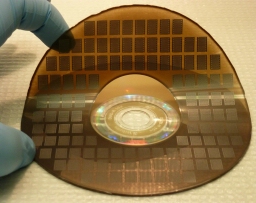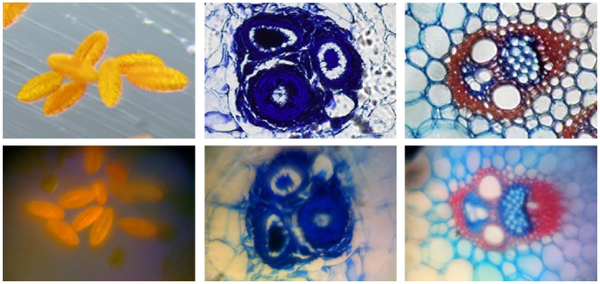It’s good to see articles about nanotechnology. The recent, Tiny nanoparticles could be a big problem, article written by Alex Roslin for the Georgia Straight (July 21, 2011 online or July 21-28, 2011 paper edition) is the first I’ve seen on that topic in that particular newspaper. Unfortunately, there are some curious bits of information included in the article, which render it, in my opinion, difficult to trust.
I do agree with Roslin that nanoparticles/nanomaterials could constitute a danger and there are a number of studies which indicate that, at the least, extreme caution in a number of cases should be taken if we choose to proceed with developing nanotechnology-enabled products.
One of my difficulties with the article is the information that has been left out. (Perhaps Roslin didn’t have time to properly research?) At the time (2009) I did read with much concern the reports Roslin mentions about the Chinese workers who were injured and/or died after working with nanomaterials. As Roslin points out,
Nanotech already appears to be affecting people’s health. In 2009, two Chinese factory workers died and another five were seriously injured in a plant that made paint containing nanoparticles.
The seven young female workers developed lung disease and rashes on their face and arms. Nanoparticles were found deep in the workers’ lungs.
“These cases arouse concern that long-term exposure to some nanoparticles without protective measures may be related to serious damage to human lungs,” wrote Chinese medical researchers in a 2009 study on the incident in the European Respiratory Journal.
Left undescribed by Roslin are the working conditions; the affected people were working in an unventilated room. From the European Respiratory Journal article (ERJ September 1, 2009 vol. 34 no. 3 559-567, free access), Exposure to nanoparticles is related to pleural effusion, pulmonary fibrosis and granuloma,
A survey of the patients’ workplace was conducted. It measures ∼70 m2, has one door, no windows and one machine which is used to air spray materials, heat and dry boards. This machine has three atomising spray nozzles and one gas exhauster (a ventilation unit), which broke 5 months before the occurrence of the disease. The paste material used is an ivory white soft coating mixture of polyacrylic ester.
Eight workers (seven female and one male) were divided into two equal groups each working 8–12 h shifts. Using a spoon, the workers took the above coating material (room temperature) to the open-bottom pan of the machine, which automatically air-sprayed the coating material at the pressure of 100–120 Kpa onto polystyrene (PS) boards (organic glass), which can then be used in the printing and decorating industry. The PS board was heated and dried at 75–100°C, and the smoke produced in the process was cleared by the gas exhauster. In total, 6 kg of coating material was typically used each day. The PS board sizes varied from 0.5–1 m2 and ∼5,000 m2 were handled each workday. The workers had several tasks in the process including loading the soft coating material in the machine, as well as clipping, heating and handling the PS board. Each worker participated in all parts of this process.
Accumulated dust particles were found at the intake of the gas exhauster. During the 5 months preceding illness the door of the workspace was kept closed due to cold outdoor temperatures. The workers were all peasants near the factory, and had no knowledge of industrial hygiene and possible toxicity from the materials they worked with. The only personal protective equipment used on an occasional basis was cotton gauze masks. According to the patients, there were often some flocculi produced during air spraying, which caused itching on their faces and arms. It is estimated that the airflow or turnover rates of indoor air would be very slow, or quiescent due to the lack of windows and the closed door. [emphases mine]
Here’s the full text from the researchers’ conclusion,
In conclusion, these cases arouse concern that long-term exposure to some nanoparticles without protective measures may be related to serious damage to human lungs. It is impossible to remove nanoparticles that have penetrated the cell and lodged in the cytoplasm and caryoplasm of pulmonary epithelial cells, or that have aggregated around the red blood cell membrane. Effective protective methods appear to be extremely important in terms of protecting exposed workers from illness caused by nanoparticles.
There is no question that serious issues about occupational health and safety with regards to nanomaterials were raised. But, we work with dangerous and hazardous materials all the time; precautions are necessary whether you’re working with hydrochloric acid or engineered nanoparticles. (There are naturally occurring nanoparticles too.)
Dr. Andrew Maynard (at the time he was the Chief Science Advisor for the Project on Emerging Nanotechnologies, today he is the Director of the University of Michigan’s Risk Science Center) on his 2020 Science blog wrote a number of posts dated Aug. 18, 2009 about this tragic industrial incident, including this one where he culled comments from six other researchers noting some of the difficulties the Chinese researchers experienced running a clinical study after the fact.
The material on silver nanoparticles and concerns about their use in consumer products and possible toxic consequences with their eventual appearance in the water supply seem unexceptionable to me. (Note: I haven’t drilled down into the material and the writer cites studies unknown to me but they parallel information I’ve seen elsewhere).
The material on titanium dioxide as being asbestos-like was new to me, the only nanomaterial I’d previously heard described as being similar to asbestos is the long carbon nanotube. I am surprised Roslin didn’t mention that occupational health and safety research which is also quite disturbing, it’s especially surprising since Roslin does mention carbon nanotubes later in the article.
There is a Canadian expert, Dr. Claude Ostiguy, who consults internationally on the topic of nanotechnology and occupational health and safety. I wonder why he wasn’t consulted. (Note: He testified before Canada’s House of Commons Standing Committee on Health meeting in June 2010 on this topic. You can find more about this in my June 23, 2011 posting, Nanomaterials, toxicity, and Canada’s House of Commons Standing Committee on Health.)
Quoted quite liberally throughout the article is researcher, Dr.Robert Schiestl (professor of pathology and radiation oncology at the University of California at Los Angeles [UCLA]). This particular passage referencing Schiestl is a little disconcerting,
Schiestl said nanoparticles could also be helping to fuel a rise in the rates of some cancers. He wouldn’t make a link with any specific kind of cancer, but data from the U.S. National Cancer Institute show that kidney and renal-pelvis cancer rates rose 24 percent between 2000 and 2007 in the U.S., while the rates for melanoma of the skin went up 29 percent and thyroid cancer rose 54 percent.
Since Schiestl isn’t linking the nanoparticles to any specific cancers, why mention those statistics? Using that kind of logic I could theorize that the increase in the number and use of cell phones (mobiles) may have something to do with these cancers. Perhaps organic food has caused this increase? You see the problem?
As for the number of nanotechnology-enabled products in use, I’m not sure why Roslin chose to cite the Project on Emerging Nanotechnologies’ inventory which is not scrutinized, i. e., anyone can register any product as nanotechnology-enabled. The writer also mentioned a Canadian inventory listing over 1600 products cited in an ETC Group report, The Big Downturn? Nanogeopolitics,
Has anyone ever seen this inventory? I’ve been chasing it for years and the only time the Canadian government reports on this inventory is in the Organization for Economic Cooperation and Development (OECD) report (cited by the ETC Group [no. 79 in their list of references] and noted in both my Feb. 1, 2011 posting and my April 12, 2010 posting). Here’s the OECD report, if you’d like to see it for yourself. The top three questions I keep asking myself is where is the report/inventory, how did they determine their terms of reference, and why don’t Canadian taxpayers have easy access to it? I’d best return to my main topic.
As for the material Roslin offers about nanosunscreens I was surprised given the tenor of the article to see that the Environmental Working Group (EWG) was listed as an information source since they recommend mineral sunscreens containing nanoscale ingredients such as titanium dioxide and/or zinc oxide as preferable to sunscreens containing hormone disruptors. From the EWG page on sunscreens and nanomaterials,
Sunscreen makers offer mineral and non-mineral formulations, as well as products that combine both mineral and non-mineral active ingredients. Mineral formulations incorporate zinc oxide or titanium dioxide in nano- and micro-sized particles that can be toxic if they penetrate the skin. Most studies show that these ingredients do not penetrate through skin to the bloodstream, but research continues. These constitute one in five sunscreens on the market in 2010 and offer strong UVA protection that is rare in non-mineral sunscreens.
The most common ingredients in non-mineral sunscreens are oxybenzone, octisalate, octinoxate, and avobenzone found in 65, 58, 57, and 56 percent of all non-mineral sunscreens on the market, respectively. The most common, oxybenzone, can trigger allergic reactions, is a potential hormone disruptor and penetrates the skin in relatively large amounts. Some experts caution that it should not be used on children. Three of every five sunscreens rated by EWG are non-mineral, and one in five sunscreens combines both mineral and non-mineral active ingredients.
EWG reviewed the scientific literature on hazards and efficacy (UVB and UVA protection) for all active ingredients approved in the U.S. Though no ingredient is without hazard or perfectly effective, on balance our ratings tend to favor mineral sunscreens because of their low capacity to penetrate the skin and the superior UVA protection they offer. [emphasis mine]
(I did find some information (very little) about Health Canada and sunscreens which I discuss in June 3, 2011 posting [if you’re impatient, scroll down about 1/2 way].)
There was some mention of Health Canada in Roslin’s article but no mention of last year’s public consultation, although to be fair, it seemed a clandestine operation. (My latest update on the Health Canada public consultation about a definition for nanomaterials is May 27, 2011.)
I find some aspects of the article puzzling as Roslin is an award-winning investigative reporter. From the kitco bio page,
Alex Roslin is a leading Canadian investigative journalist and active trader based in Montreal. He has won a Canadian Association of Journalists award for investigative reporting and is a five-time nominee for investigative and writing prizes from the CAJ and the National Magazine Awards. He has worked on major investigations for Canada’s premier investigative television program, the fifth estate, and the CBC’s Disclosure program. His writing has appeared in Technical Analysis of Stocks & Commodities, The Financial Post, Toronto Star and Montreal Gazette. He regularly writes about investing for The Montreal Gazette.
I notice there’s no mention of writing in either science or health matters so I imagine this is an early stage piece in this aspect of Roslin’s career, which may explain some of the leaps in logic and misleading information. Happily, I did learn a few things from reading the article and while I don’t trust much of the information in it, I will investigate further as time permits.
In general, I found the tenor of the article more alarmist than informational and I’m sorry about that as I would like to see more information being shared and, ultimately, public discussion in Canada about nanotechnology and other emerging technologies.

